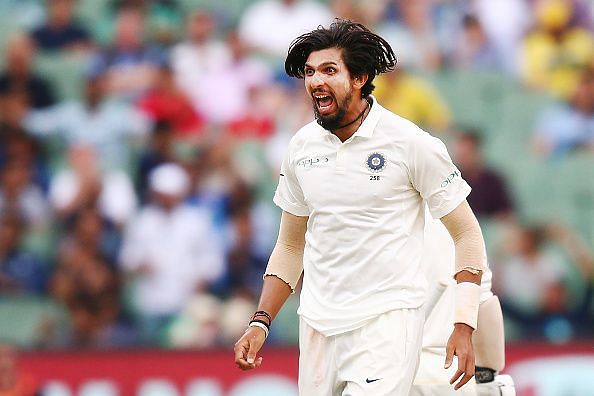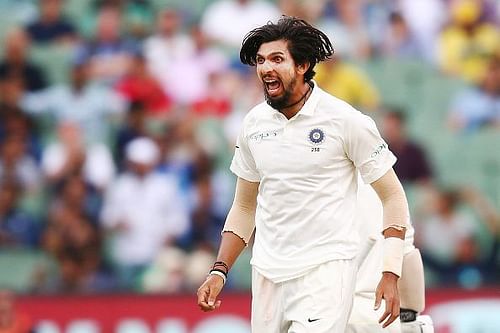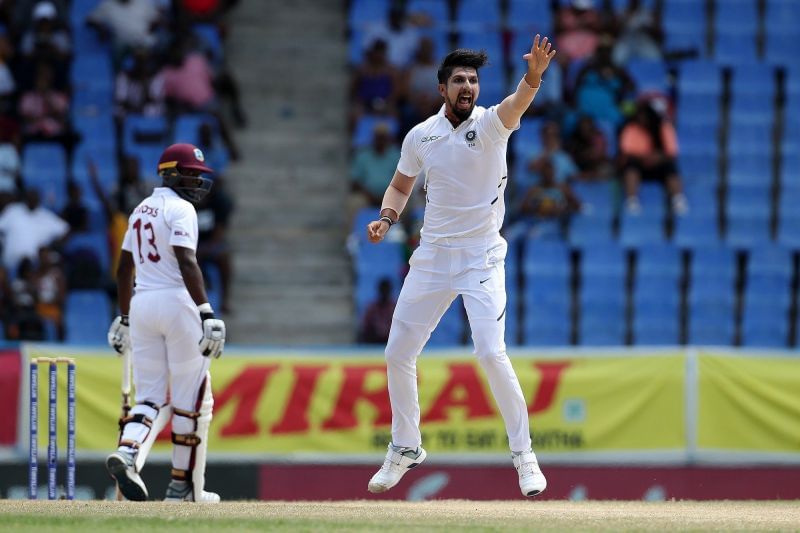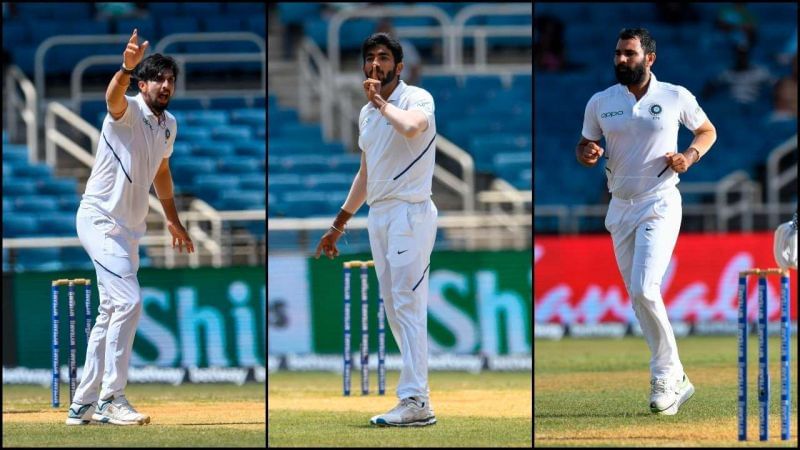
The evolution of Ishant Sharma

The Sharma whose name has been doing the rounds across the cricketing world is the swashbuckling opener from Mumbai, the hitman, Rohit Sharma. But amidst the glamour of white-ball cricket, there's another Sharma who has been a constant in Indian cricket circles in the longer format for more than 12 years. He might not seem to be as impactful as a Jasprit Bumrah, but Ishant Sharma has time and again delivered for his team under different captains.
Ishant, the bowler, has had quite a journey in Indian cricket. The lanky kid from Delhi has transformed into a seasoned Test cricketer after going through several ups and downs in his career. It is not a long ago when a 19-year-old Ishant set the stage on fire after bowling that magical spell to Ricky Ponting at Perth in January 2008.
After a tough Test match at Sydney, the Indian team was all fired up to give it back to the Aussies at the WACA. The Aussie skipper had no answers to Ishant's hostile bowling. In fact, Ishant continued to rattle Ponting in the ODI series that followed soon after.
These were promising signs for Indian cricket and indicated that Ishant was in this for the long run.
However, in the following years, it was not smooth sailing for him. Lack of consistency pushed him into the sidelines several times. As a result, Ishant was in and out of the team many times. In spite of all this, Ishant continued to hang in there, and impressive performances were always around the corner. With his height, Ishant always posed as a threat with his extra bounce. It was difficult for Dhoni, the skipper then to ignore him and soon Ishant gained his trust and place back in both the Test and ODI teams.
Red-ball specialist
As time passed, it became apparent that Ishant was not as effective in white-ball cricket as Test cricket. That could be the reason why he has been unable to find a place in the World Cup squads. However, he kept on bouncing back whenever he was dropped from the team and soon became the part of the core of Indian bowling in Tests. Ishant had created an image of a workhorse of himself for a brief period. He used to run in for long periods, bowling tireless spells keeping things tight and kept on fulfilling his captain's demands.
It is tough to be a successful fast bowler in Test cricket in India. The fact that Indian pacers spend half their career playing in the subcontinent, their numbers don't reflect the quality of their bowling. When your role is to play support cast to the likes of Ravichandran Ashwin, Ravindra Jadeja, Harbhajan Singh, and Anil Kumble in spin-friendly conditions of the subcontinent, nobody can blame you for lack of wickets.
Ishant Sharma has been part of two generations of Indian bowlers, one led by Zaheer Khan and the other led by Ishant himself. And more importantly, Ishant's career can also be broadly classified into two. Until 2017, Ishant was a strike bowler and even managed to bowl those match-winning spells but not frequently.
Many a times he would remain wicketless in spite of bowling very well. Ishant has always been a back-of-the length bowler and that was the main reason for those lack of wickets. But post 2017 that has changed, and he has reaped the rewards because of that change. He is in that good-length and fuller area more often than ever, forcing batsmen to play. Another weapon that he has managed to add to his armory is the out-swinger. The incoming ball was his stock delivery. But, with the occasional out-swinger, he can trouble batsmen more often than not.

A champion abroad
Coming to the performances, Ishant has made some significant contributions to Indian cricket. Here are some great and memorable efforts to back them up:
- 5/118 vs Pakistan in the 3rd test at Bengaluru, 2007
- 2/34, 1/63 vs Australia in the 3rd test at Perth, 2008
- 4/38 vs Australia in Commonwealth Bank ODI series at Melbourne, 2008
- 6/55, 4/53 vs West Indies in the 2nd test at Barbados, 2011
- 4/79 vs South Africa in the 1st test at Johannesburg, 2013
- 6/51 vs New Zealand in the 2nd test at Wellington, 2014
- 7/74 vs England in the 2nd test at Lords, 2014 (his career-best in tests)
- 5/54, 3/32 vs Sri Lanka in the 3rd test at Colombo, 2015
- 5/51 vs England in the 1st test at Birmingham, 2018
He has 278 wickets from 92 tests at an average of 33.41. These are impressive numbers, and the stats don't reflect the innumerable momentum-changing spells he has bowled throughout his career. He has been instrumental in many away Test victories as well, claiming 77 wickets in 20 away wins at an impressive average of 23.50. In the recently concluded Test series vs West Indies, he picked 11 wickets at an average of 12.27. To add to that, he also scored his maiden fifty in Test cricket in the series. He became India's leading pacer to pick most Test wickets (158) outside Asia, breaking Kapil Dev's record of 155 wickets. Since 2018, he has picked 52 wickets at an average of 19.78.

Over the last two years, Ishant Sharma has been simply outstanding. He has been doing justice to his talent, and with his experience, he leads one of the most deadly trios of pace bowling in the world right now along with Jasprit Bumrah and Mohammad Shami. With the arrival of Virat Kohli as captain, the Indian pacers are enjoying the freedom of being fearless and aggressive.
The other thing that Kohli has brought to the table is fitness which is benefiting all the players including Ishant. Being fit has enabled most of the players to be at their best. Ishant Sharma is at the peak of his powers and he will look to continue this dominance for a few more years.
Also see – Dream 11 prediction